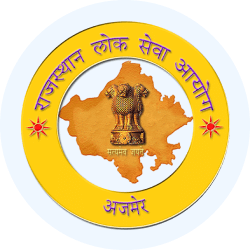RPSC Monthly Current Affairs: May 2025 | Monthly Current Affairs RPSC - RPSC RAS (Rajasthan) PDF Download
Oran Lands to be Classified as Forests
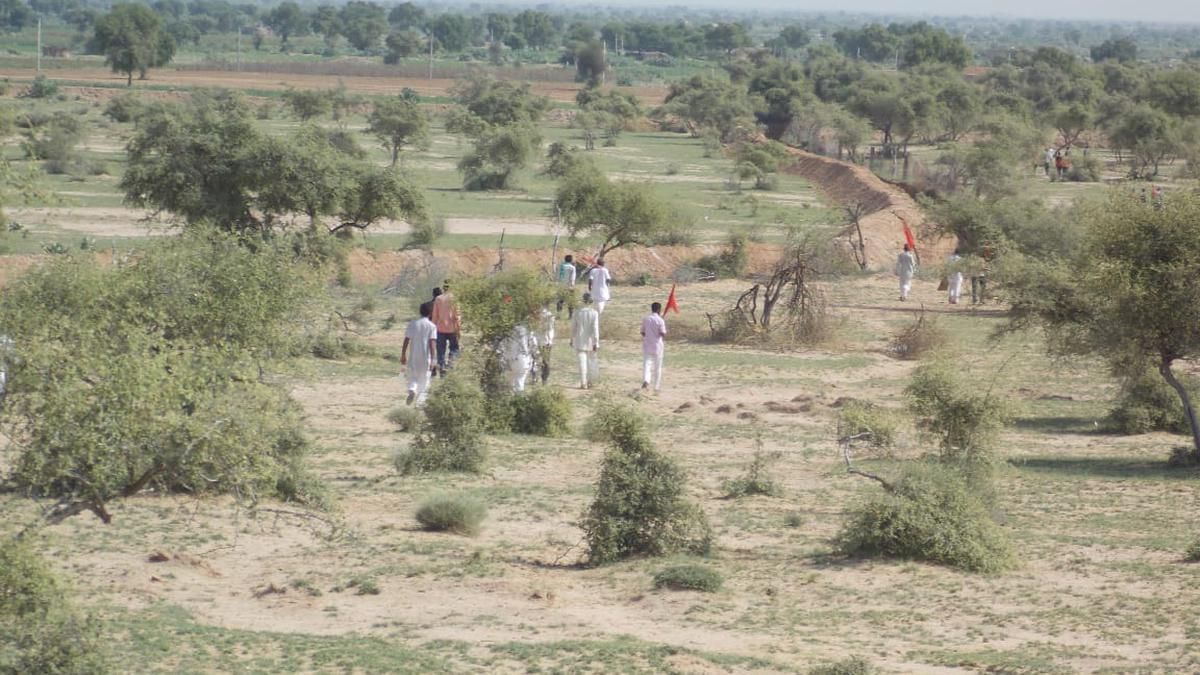
Why in News?
The Rajasthan government is taking steps to officially recognize community-protected 'Orans' lands as forests. This move is in accordance with the Wildlife Protection Act of 1972. As a result, these sacred groves will be designated as "community reserves" under the law.
What are Oran Lands?
- Orans are sacred forest areas in Rajasthan that are traditionally preserved and managed by local communities.
- These groves are dedicated to local deities, reflecting a strong socio-religious tradition.
- Rajasthan is home to nearly 25,000 Oran sites, covering over 6 lakh hectares in the desert landscape.
- Orans are known by various names in Rajasthan, including deora, malvan, deorai, rakhat bani, deo ghats, mandir van, and baugh.
- Important species found in Oran lands include Khejri trees (Prosopis spicigera), deer, blackbuck, and nilgai, which are significant to the Bishnoi community.
- Local communities have historically played a crucial role in protecting these forests from deforestation.
- Oran lands support grazing, provide forest products, assist in natural water filtration, and sustain local economies.
Supreme Court Involvement
- On December 18, 2024, the Supreme Court directed the Rajasthan government to conduct detailed mapping of Oran lands.
- The court emphasized the need to follow the 2005 recommendations of the Central Empowered Committee (CEC) for classifying Orans as forests.
- Despite this, the Rajasthan Forest Policy of 2023 classified Orans as general community lands, which may not offer sufficient legal protection against encroachment and ecological damage.
- The Supreme Court's ruling aims to enhance legal protections by formal forest classification.
Wildlife (Protection) Act, 1972
- The Wildlife (Protection) Act, 1972, provides a legal framework for the protection of various species of wild animals and plants in India.
- It aims to manage their habitats and regulate the trade of wild animals, plants, and their products.
- The act includes different lists of plants and animals that receive varying levels of protection and government monitoring.
About the Central Empowered Committee (CEC)
- The CEC was initially established by the Supreme Court in 2002 and reconstituted in 2008.
- Its primary role is to oversee environmental conservation and ensure compliance with court orders and environmental laws.
- A recent reform in 2023, as per a notification by the Union Ministry of Environment, Forest and Climate Change, aims to make the CEC a permanent statutory body.
- This change is intended to grant the CEC ongoing authority to address key environmental issues effectively.
GI Tag for Ker Sangri

Why in News?
Recently, the Geographical Indication (GI) tag was granted to Ker Sangri, a famous dish from Rajasthan. This official recognition highlights Ker Sangri as a unique regional product made using traditional methods.
Ker Sangri: An Overview
- Ker Sangri is a traditional dish hailing from Rajasthan, crafted from two indigenous desert plants: Ker, a small wild berry, and Sangri, a bean sourced from the Khejri tree, both of which thrive in the arid Thar Desert.
- These plants are naturally adapted to grow in dry, sandy soil.
- Historically, Ker Sangri served as a crucial survival food during periods of drought when fresh vegetables were hard to come by.
- Over time, this dish has evolved into a beloved delicacy and a cultural emblem of Rajasthan.
- The Khejri tree, the source of the Sangri bean, holds significant cultural and ecological value.
- It is revered by the Bishnoi community, who have long safeguarded the tree as a symbol of life and environmental sustainability.
Significance of the GI Tag for Ker Sangri
- The GI tag is crucial for maintaining the authenticity of Ker Sangri by preventing counterfeit or inferior versions from misrepresenting the dish.
- It plays a vital role in supporting local farmers and artisans, ensuring they receive proper recognition and fair compensation for their traditional products.
Other GI-Tagged Products from Rajasthan
- Kota Doria
- Blue Pottery of Jaipur
- Molela Clay Work
- Kathputlis of Rajasthan
- Sanganeri Hand Block Printing
- Bagru Hand Block Print
- Udaipur Koftgari Metal Craft
- Makrana Marble
- Sojat Mehndi
- Bikaneri Bhujia
- Thewa Art Work
- Pokaran Pottery
- Nathdwara Pichhwai Painting
- Bikaner Kashidakari Craft
- Jodhpur Bandhej Craft
- Bikaner Usta Kala Craft
Understanding the Geographical Indication (GI) Tag
- A GI tag is a designation used for specific products that are associated with a particular geographical region.
- This tag allows only authorised users from that region to use the product name, protecting it from imitation or unauthorized use.
- A registered GI tag is valid for a period of 10 years and can be renewed after its expiration.
- The registration of GI tags is overseen by the Department for Promotion of Industry and Internal Trade, which operates under the Ministry of Commerce and Industry.
Legal Framework Governing GI Tags
- The Geographical Indications of Goods (Registration and Protection) Act, 1999 provides the legal basis for the registration and protection of GI tags in India.
- India’s commitment to the WTO Agreement on Trade-Related Aspects of Intellectual Property Rights (TRIPS) also supports the protection of GI tags as part of international trade agreements.
Urban Improvement Trust (UIT) in Balotra
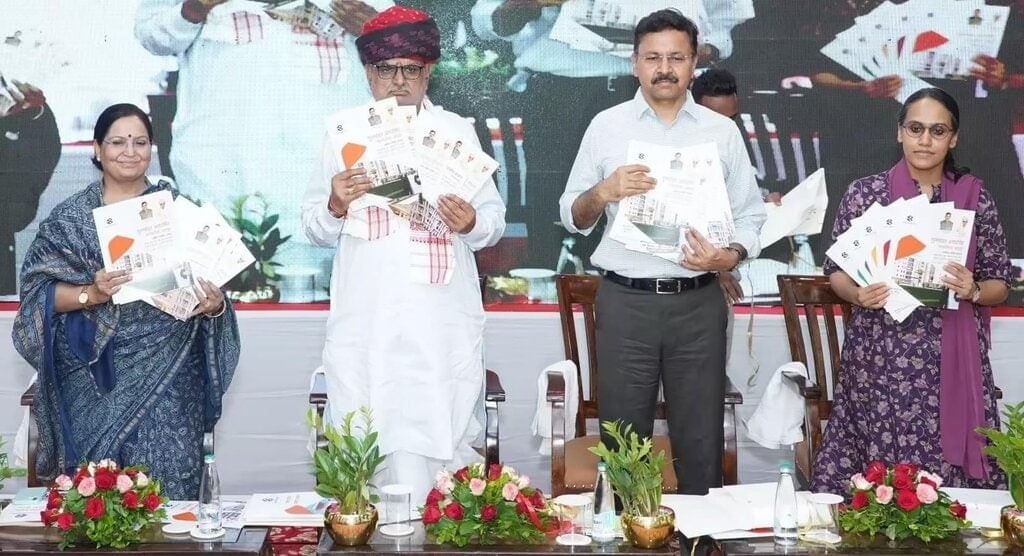
Why in News?
The Rajasthan government has established the Urban Improvement Trust (UIT) for Balotra, following its designation as a new district created from Barmer. This initiative was announced in the 2025–26 state budget.
Key Points
- Urban Improvement Trust (UIT): UIT, also known as Nagar Vikas Nayas, is a statutory body in Rajasthan, established under the Rajasthan Urban Improvement Act, 1959.
- Objectives: To promote planned townships and industrial corridors, stimulate economic growth and attract investments, and enhance urban governance and public service delivery.
Significance of UIT Formation in Balotra
- Planned Urban Growth: Balotra, recognized for its textile industry, has witnessed rapid growth. The UIT aims to manage this expansion by fostering sustainable urban development.
- Infrastructure Development: The UIT’s jurisdiction includes key settlements and emerging townships, facilitating improvements in roads, water supply, sanitation, and housing to meet contemporary standards.
- Economic Growth and Investment: The Rising Rajasthan Summit 2024 highlighted Balotra's investment potential, with the UIT providing a framework to support industrial zones and townships.
- Decentralised Urban Governance: By covering various tehsils and villages, the UIT aims to enhance governance and public service delivery through better coordination between urban and rural areas.
Rajasthan’s Textile Industry
- About: The textile industry is crucial to Rajasthan’s economy, contributing significantly to the state’s GDP, and is renowned for its blend of traditional and modern production techniques.
- Key Features and Significance:
- Rajasthan is a leading producer of cotton and wool, playing a prominent role in India’s fibre production.
- The state ranks fourth in cotton production in FY 2023, after Gujarat, Maharashtra, and Telangana.
- Bhilwara, known as the 'Textile City of India,' is a major centre for textile manufacturing and exports.
- Rajasthan is celebrated for its traditional textile techniques such as Bandhani, Leheriya, Kota Doriya, and Applique.
- The textile sector effectively combines handwoven traditions with modern technology, offering a diverse range of high-quality products.
Rising Rajasthan Global Investment Summit, 2024
- The Rising Rajasthan Global Investment Summit was held in December 2024 at the Jaipur Exhibition Convention Centre (JECC), Sitapura, Jaipur.
- The theme of the summit was “Replete, Responsible, Ready,” emphasizing sustainable mining, water security, and women-led startups.
- Participation included over 32 countries and 20 international organizations, engaging in thematic sessions and exhibitions to showcase Rajasthan’s potential.
Keoladeo National Park
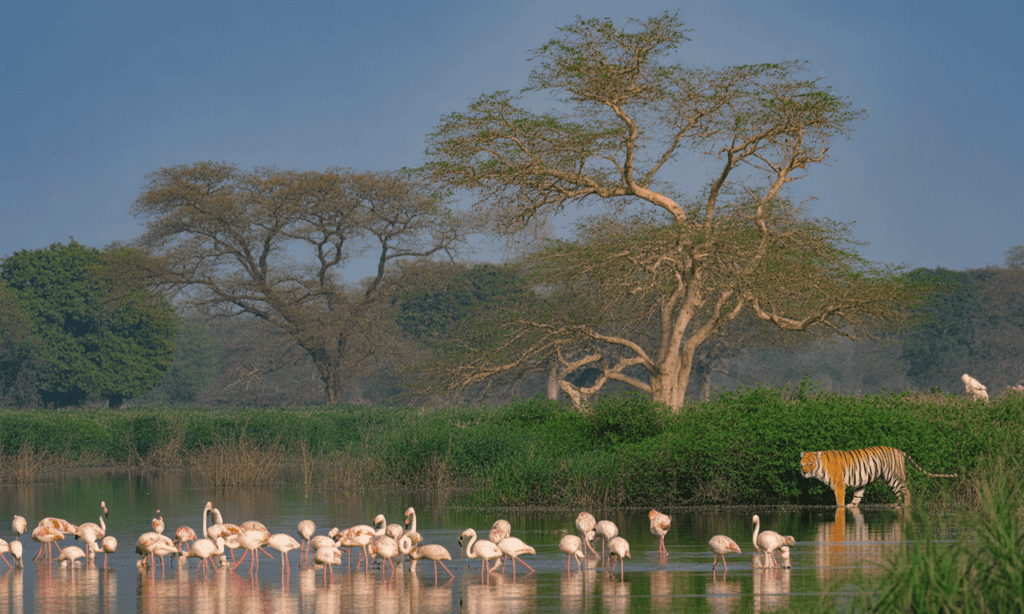 Turtle Sanctuary
Turtle Sanctuary
Why in News?
Keoladeo National Park in Rajasthan, famous as the 'paradise of birds,' is becoming a crucial sanctuary for turtles. It hosts eight out of the ten turtle species found in the state, making it a vital habitat for these creatures.
Key Points
- About: Keoladeo National Park, a UNESCO World Heritage Site, is a wetland and bird sanctuary situated in Bharatpur, Rajasthan. It is renowned as one of the world's most significant bird-watching destinations.
- The park, along with Chilika Lake, was among the first Ramsar Sites in India, recognized in 1981 for its ecological importance.
- Keoladeo is famous for its diverse bird population, hosting over 364 species, including rare and threatened birds. In addition to birds, the park is home to various mammals, such as jackals, wild cats, and hyenas.
Fauna and Flora
- Fauna: The park is inhabited by various animals, including Sambar deer, Nilgai, wild boar, porcupines, and mongooses.
- Flora: The predominant vegetation in the park consists of tropical dry deciduous forest, mainly featuring the Babul tree (Acacia nilotica), mixed with dry grassland.
- Rivers: The Gambhir and Banganga rivers flow through Keoladeo National Park, contributing to its diverse ecosystem.
Optimal Conditions for Turtle Habitats
- The park's combination of water bodies, forest cover, and land creates an ideal environment for turtles.
- Deep ponds, marshy regions, and dense vegetation offer perfect conditions for turtle nesting, foraging, and reproduction.
Turtle Species Found in Keoladeo National Park
- The park is home to numerous turtles, some believed to be over 200 years old, enhancing the park's ecological and cultural significance.
- Indian Softshell Turtle: This species thrives in ponds and rivers, playing a crucial role in maintaining water quality by feeding on aquatic life and plants, thus aiding in water purification.
- Crowned River Turtle:. herbivorous turtle recognized by the yellow-orange stripes on its face, contributing to the park's biodiversity.
- Other rare species include the Indian Flapshell Turtle, Indian Tent Turtle, and Indian Star Turtle.
About the Indian Softshell Turtle
- Also known as the Ganges Softshell Turtle, this freshwater species is native to rivers in northern and eastern India.
- The Indian Softshell Turtle belongs to the Trionychidae family, known for their flexible, leathery shells.
- Natural Habitat: These turtles are found in major rivers like the Ganges, Indus, and Mahanadi, as well as in lakes, ponds, and canals.
- Distinctive Shell Characteristics: Their smooth, oval to round carapace is typically olive or green with a yellow border.
- Conservation Status: The Indian Softshell Turtle is listed as Endangered on the IUCN Red List and is protected under the Wildlife Protection Act (WPA), 1972, in Schedule I.
Other Notable Softshell Turtles in India
- Leith’s Softshell Turtle: This species is endemic to peninsular India and is classified as Critically Endangered.
- Peacock Softshell Turtle: Listed as Endangered, this turtle is found in ponds and temple tanks in northeastern India and Bangladesh.
Supreme Court Approves Wetlands Near Ana Sagar Lake
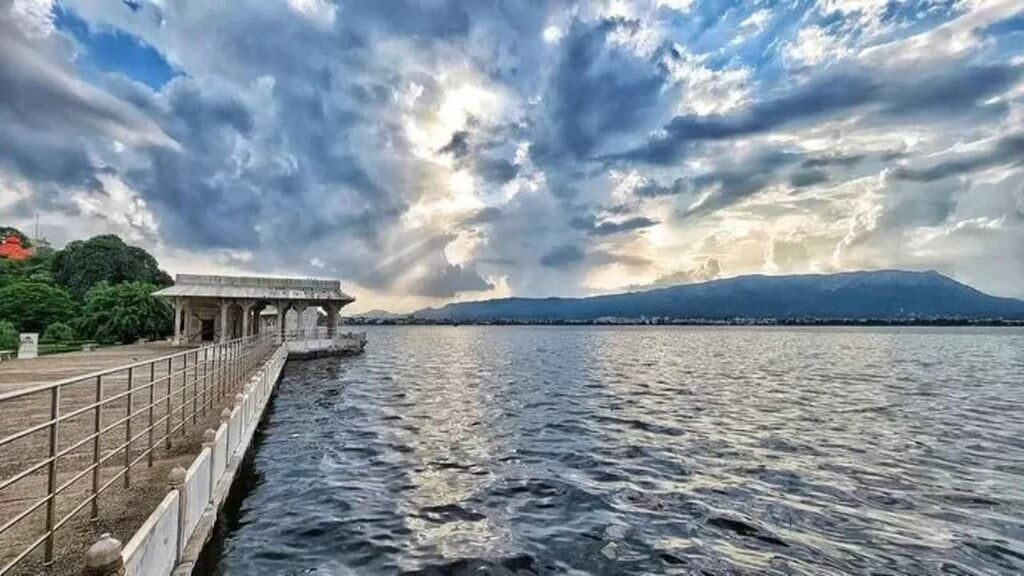
Why in News?
The Supreme Court has given the green light to the Rajasthan government's plan to establish two new wetlands near Ajmer. This initiative aims to restore ecological balance and promote sustainable urban development around Ana Sagar Lake. Ana Sagar Lake, an artificial lake constructed by Prithviraj Chauhan's father, Arunoraj (also known as Anaji Chauhan), dates back to the twelfth century (1135-1150 AD). It was named after its creator and is one of Ajmer's most popular and largest lakes, as well as one of the largest in India. Over time, the Mughal emperor Jahangir enhanced the lake's surroundings by building Daulat Bagh, also known as Subhash Udyan, in the lake's courtyard. Later, Shah Jahan added a marble Baradari (pavilion) in 1637 AD, further beautifying the lake.
Key Points
Background
- Ana Sagar Lake is a vital urban water body in Ajmer.
- Unfortunately, it has suffered ecological damage due to unregulated development and human activities in its vicinity.
- To protect the lake's ecosystem, the National Green Tribunal (NGT) had previously ordered the removal of several illegal structures in the lake's green zones, including a replica of the Seven Wonders.
Locations of the Proposed Wetlands
- Two wetlands are set to be constructed outside the catchment area of Ana Sagar:
- A 12-hectare wetland at Foy Sagar (Varun Sagar) Extension near Hathi-Khera.
- A 10-hectare wetland at Tabiji-1.
- These wetlands aim to improve water retention, biodiversity, and ecological health in the region.
Scientific Review and Environmental Assessment
- The National Environmental Engineering Research Institute (NEERI) conducted a comprehensive environmental assessment of the project.
- NEERI is a prominent research institute under the Council of Scientific and Industrial Research (CSIR), operating under the Ministry of Science and Technology.
- The institute plays a crucial role in environmental management, pollution control, and sustainable development through research, policy making, and technology innovation.
Definition of Wetlands
- Wetlands are defined as areas of marsh, fen, peatland, or water (either natural or artificial) with still or flowing water. This includes marine regions with a depth of no more than six metres.
- Wetlands serve as ecotones, bridging terrestrial and aquatic ecosystems, making them essential for biodiversity and ecological balance.
Significance of Wetlands
- Natural Water Filters: Wetlands play a crucial role in filtering water by trapping sediments, breaking down pollutants, and absorbing excess nutrients. This natural filtration process helps maintain water quality and supports aquatic life.
- Flood Prevention: Wetlands have the capacity to absorb and store excess water, thereby reducing flood risks by up to 60%. This function is vital for protecting homes and infrastructure, as highlighted by the National Disaster Management Authority (NDMA).
- Habitat for Wildlife: Despite covering only 6% of the Earth's surface, wetlands are home to over 40% of global species, including threatened ones like the Sarus Crane. This makes wetlands essential wildlife habitats, as noted by the Space Applications Centre (SAC).
- Carbon Sequestration: Wetlands are significant carbon sinks, storing large amounts of carbon in their soil and vegetation. The Indian Network for Climate Change Assessment (INCCA) emphasizes the importance of restoring wetlands for India's climate objectives, as they contribute to carbon storage, cleaner water, and reduced flood risks.
Some of the Wetlands Located in Rajasthan
- Protected Area Wetland
- Ranthambhore Tiger Reserve - Padam talab
- Rambagh - Malik talab
- Jaisamand Wildlife Sanctuary - Pilader Lake
- Ramgarh Wildlife Sanctuary - Bharutalab
- Jetsagar - Shambhusagar
- Shergarh Wildlife Sanctuary - Acholi dam
- Padakoh talab
ASI to Restore Bhand Devra Temple in Rajasthan
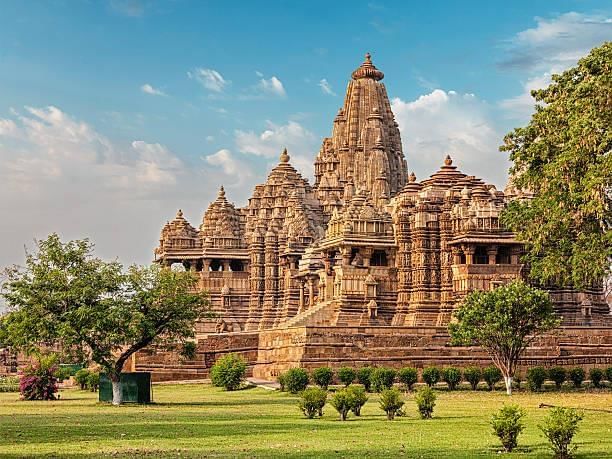
Why in News?
The Archaeological Survey of India (ASI) will restore the 10th-century Bhand Devra temple in Baran district, Rajasthan, often referred to as the state’s “mini Khajuraho.”
Key Points
Architectural Style and Location:
- Nagara architectural style.
- Situated by a river in Baran district.
- Resembles Khajuraho temples, earning the nickname “Rajasthan’s mini Khajuraho.”
Historical Background and Patronage:
- Built by King Malaya Verma of the Nagavanshi dynasty.
- Restored in 1162 CE by King Trishna Verma of the Meda dynasty.
Neglect and Loss of Heritage:
- Damaged due to years of neglect.
- Issues include crumbling structures and stolen idols.
A Geological and Cultural Wonder:
- Nearby Ramgarh Crater is a significant geo-heritage site.
- Formed by an asteroid impact around 165 million years ago.
- Officially India’s third-largest meteor impact crater, 3.5 kilometers wide.
Nagara or North Indian Temple Style
- Characterized by a curvilinear tower (Shikhara ), a sanctum sanctorum (Garbhagriha ), and a pillared hall (Mandapa ).
- Built on a raised stone platform (Jagati. with steps leading to the entrance.
- Ground plan is typically square or rectangular.
Shikhara (Curvilinear Tower):
- Early Nagara temples featured a single Shikhara, while later ones often have multiple towers.
Garbhagriha (Sanctum Sanctorum):
- Located beneath the tallest Shikhara, houses the main deity.
- Reflects the spiritual essence of the temple, usually plain to signify inner sanctity.
Jagati and Pitha (Elevated Platforms):
- Raised on a high platform called Jagati, enhancing physical and symbolic elevation.
Adhisthana (Base Platform):
- Rises above the Pitha and Jagati, supporting the temple’s superstructure.
Khajuraho Temple
About:
- Built by the Chandela dynasty in the 10th and 11th centuries, showcasing unique architecture and sculpture.
- Only 20 temples remain in the Nagara style, with the Kandariya Mahadev temple being particularly famous.
- Represent both Jain and Hindu religions.
World Heritage Site:
- Recognized as a UNESCO World Heritage Site in 1986.
Archaeological Survey of India (ASI)
The ASI, under the Ministry of Culture, is responsible for archaeological research and protecting India’s cultural heritage. Operating under the AMASR Act, 1958, it oversees over 3,650 ancient monuments and archaeological sites. ASI’s work includes surveying, excavating, conserving, and maintaining protected monuments. Founded in 1861 by Alexander Cunningham, the “Father of Indian Archaeology,” ASI plays a vital role in preserving India’s historical legacy.
Tanot Mata Temple and Jaisalmer Fort
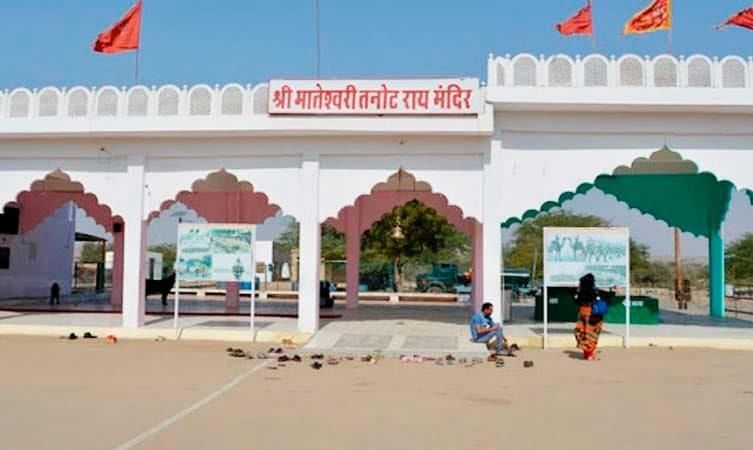
Why in News?
Tanot Mata Temple near the India-Pakistan border has reopened after being temporarily closed due to cross-border tensions. The Jaisalmer Fort Palace Museum, located within the fort, has also reopened.
Key Points
- Tanot Mata Temple:
- An ancient Hindu temple in Jaisalmer district, Rajasthan, dedicated to Tanot Rai, a form of the goddess Hinglaj Mata.
- Local legend claims the temple was founded by tribal communities who revered Tanot Rai as their protector.
- Over time, it became a significant spiritual center, attracting many pilgrims.
- Background & Wartime Significance:
- Gained fame during the Indo-Pak wars of 1965 and 1971 when unexploded bombs dropped near the temple did not explode.
- Unexploded bombs from 1965 are now on display at the Tanot Mata Museum within the temple complex.
- After the 1971 war, the Indian government assigned the temple's management to the Border Security Force (BSF).
- A Vijay Sthamba (Victory Pillar) was built to honor India’s victory in the 1971 war, with commemorative events held annually on December 16.
- Jaisalmer Fort:
- Known as India’s only ‘living’ fort, housing residents within its walls, making upkeep essential for their safety.
- Constructed in 1156 AD by Raja Rawal Singh to protect against invasions.
- Served as a vital trade hub along the Silk Route, linking India to Central Asia.
- Made from yellow sandstone, the fort appears golden in sunlight, earning its nickname “Sonar Quila” or “Golden Fort.”
- The Raj Mahal (Royal Palace) is the largest palace within the fort, showcasing stunning medieval Rajasthani architecture.
- The Jaisalmer Fort Palace Museum, established in 1982, aims to preserve the area's rich cultural heritage.
- Archaeological Survey of India:
- Responsible for maintaining the fort.
- In 2013, the hill forts of Rajasthan, including Jaisalmer Fort, were designated a UNESCO World Heritage Site.
- Protected under the Monuments of National Importance Act of 1951.
- Border Security Force (BSF):
- Established in 1965, one of the Central Armed Police Forces of India.
- Under the control of the Ministry of Home Affairs (MHA), tasked with guarding borders with Pakistan and Bangladesh.
- Involved in anti-Naxal operations and contributes to UN peacekeeping missions.
International Day for Biological Diversity 2025
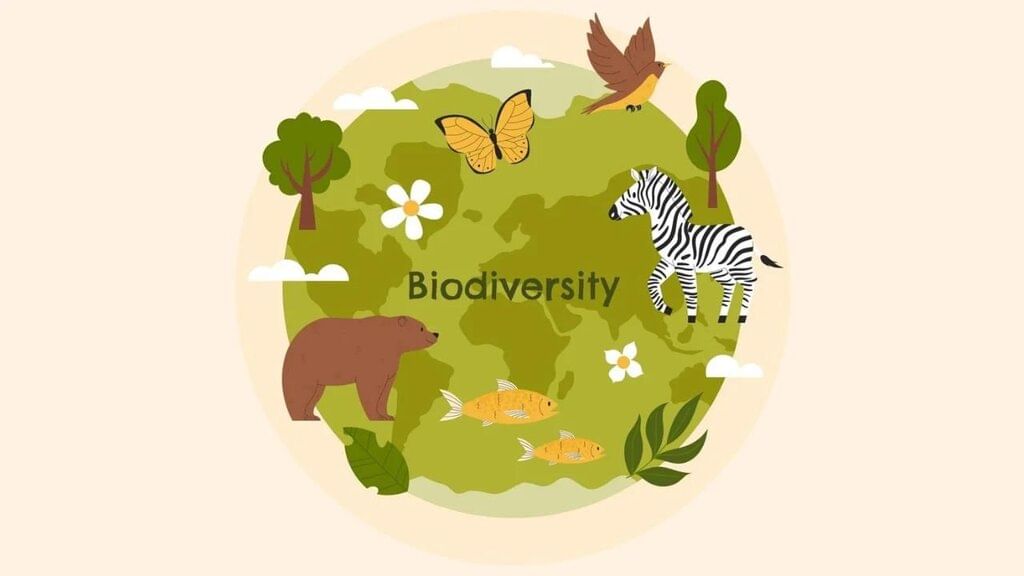
Why in News?
National event was held in Udaipur, Rajasthan, to celebrate the International Day for Biological Diversity. This event was organized by the Ministry of Environment, Forest and Climate Change (MoEFCC), the National Biodiversity Authority, the Rajasthan Forest Department, and the Rajasthan State Biodiversity Board. India, with its vast land area of 329 million hectares, is one of the 17 mega-diverse countries in the world, home to over 100,000 animal species and 55,000 plant species.
Key Points
- International Day for Biodiversity (IDB): Celebrated annually on 22nd May to raise awareness about the importance of conserving biological diversity globally.
- Adoption of the Convention: The United Nations adopted the Convention on Biological Diversity on this date in 1992.
- Theme for 2025: ‘Harmony with Nature and Sustainable Development.’
- Official Proclamation: The UN officially proclaimed 22nd May as IDB in 2000.
- Purpose of the Convention: The UNCBD is a legally binding agreement aimed at conserving biodiversity.
- India’s Participation: India is a participant in the UNCBD and enacted the Biological Diversity Act, 2002 to support its objectives.
- United Nations Decade on Biodiversity: The UN General Assembly designated the years 2011-2020 as the United Nations Decade on Biodiversity to enhance the implementation of the Strategic Plan for Biodiversity.
Highlights of the Event
- Launch of National Campaign:. campaign for World Environment Day 2025 (5th June) focusing on ‘Ending Plastic Pollution’ was inaugurated.
- Exhibition Inauguration: An exhibition showcasing biodiversity and bioresources, including medicinal plants and conservation innovations, was also inaugurated.
- India’s Global Commitment: Discussion on the Kunming-Montreal Global Biodiversity Framework (KMGBF) during the 16th Conference of Parties (COP16) of the CBD in 2024.
- National Biodiversity Targets: India updated its national biodiversity targets in September 2024 and released a revised National Biodiversity Strategy and Action Plan (NBSAP) on 30th October 2024.
India’s Conservation Achievements Include:
- Establishment of Ramsar sites and expansion of protected wetlands covering 1.35 million hectares.
- Notification of 49 Biodiversity Heritage Sites under the ‘Ek Ped Maa Ke Naam’ campaign.
- Success of the campaign launched on World Environment Day 2023, resulting in the planting of 142 crore trees globally.
Resources and Publications Released during the Event:
- Updated NBSAP 2024–2030.
- India’s Seventh National Report (NR7) to the CBD.
- Compendium on India’s Biodiversity Heritage Sites.
- Biological Diversity Act, 2002.
- Brochure on the 2025 Access and Benefit Sharing Regulations under the Ramsar Sites in Rajasthan.
Keoladeo National Park
- Keoladeo National Park, also known as Bharatpur Bird Sanctuary, is a globally recognized wetland and bird sanctuary. It is located across the Jaipur, Ajmer, and Nagaur districts and is referred to as the Sambhar Lake.
- This site is India’s largest inland saline lake and is internationally recognized as a Ramsar site. Designated in 1990, Keoladeo National Park holds significant ecological importance as a vital winter habitat for migratory birds, including species such as flamingos and pelicans.
Kunming-Montreal Global Biodiversity Framework (KMGBF)
- The Kunming-Montreal Global Biodiversity Framework (KMGBF) was adopted during the 15th meeting of the Conference of the Parties to the UN Convention on Biological Diversity in December 2022.
- This framework aims to support the achievement of sustainable development goals and build on previous strategic plans for biodiversity.
India’s Initiatives Related to Biodiversity Conservation:
- India Business & Biodiversity Initiative (IBBI).
- Wetland (Conservation and Management) Rules 2010.
- National Plan for Conservation of Aquatic Ecosystem.
- Wildlife Crime Control Bureau.
- Biological Diversity Act, 2002.
Non-Functioning of Permanent Lok Adalats in Rajasthan

Why in News?
The delay by the Rajasthan government in extending the tenure of presiding officers and members has caused the suspension of operations in 16 districts. This has led to delays in resolving thousands of pending cases, impacting overall dispute resolution. The State Legal Services Authority clarified on 3rd May 2025 that members whose tenure has ended cannot take part in proceedings. In Jodhpur alone, over 972 cases are pending, and the Rajasthan High Court estimates that the total backlog across districts may exceed 10,000 cases.
Key Points
- Judicial Response: The High Court took notice of the situation, highlighting concerns about access to justice and the right to a fair trial.
- The Supreme Court's judicial review: A Division Bench of the High Court referred to its previous ruling in Brij Mohan Lal vs. Union of India (2012), allowing judicial review of policy decisions if they are deemed arbitrary or in bad faith.
- An amicus curiae is a person not involved in a case who can assist the court by providing information and expertise regarding the issues at hand.
Permanent Lok Adalats (PLAs)
- About. PLAs function under Section 22-B of the Legal Services Authorities Act, 1987. They are set up to facilitate pre-litigation conciliation and settlement, particularly for Public Utility Services.
- PLAs provide a mandatory pre-litigation forum for parties to try and resolve disputes amicably. However, Lok Adalats handle both pending and pre-litigation matters.
- Note. PLAs do not have jurisdiction over criminal cases.
- Composition. Each PLA includes:
- One Chairman (usually a retired judicial officer).
- Two other members with experience in public service or law.
- Binding Nature. The decisions made by a PLA are final and binding on all parties. If no mutual settlement is reached, the PLA can decide the case based on the merits. There is no appeal against the decision, ensuring a quick and definitive resolution.
Implications of Non-Functioning of PLAs
- Access to Justice. Lok Adalats are crucial for providing affordable and speedy justice, particularly for vulnerable individuals.
- Case Backlog. The suspension threatens to worsen the existing judicial backlog, further delaying dispute resolution.
- Alternative Dispute Resolution (ADR) Disruption. The disruption undermines the ADR framework, leading to more cases being redirected to regular courts.
- Litigant Uncertainty. Ongoing cases affected by the expired tenures of officials leave litigants in a state of uncertainty, damaging trust in the legal system.
Lok Adalat
- About. Lok Adalat, also known as the People’s Court, is a forum for settling disputes either pending in court or at the pre-litigation stage through compromise.
- It is based on Gandhian principles and is recognised by the Supreme Court as an important part of the ADR system, aimed at alleviating the burden on Indian courts.
- Objective. Its aim is to provide quick and inexpensive justice without the lengthy procedures typical in regular courts. In Lok Adalat, there are no winners or losers, promoting a harmonious approach to resolving disputes.
- Legal Framework. Originally a voluntary institution without legal authority, the Legal Services Authorities Act, 1987, granted Lok Adalats statutory status, allowing them to issue awards equivalent to court decrees.
Inauguration of Pradhan Mantri Divyasha Kendra (PMDK) in Kota
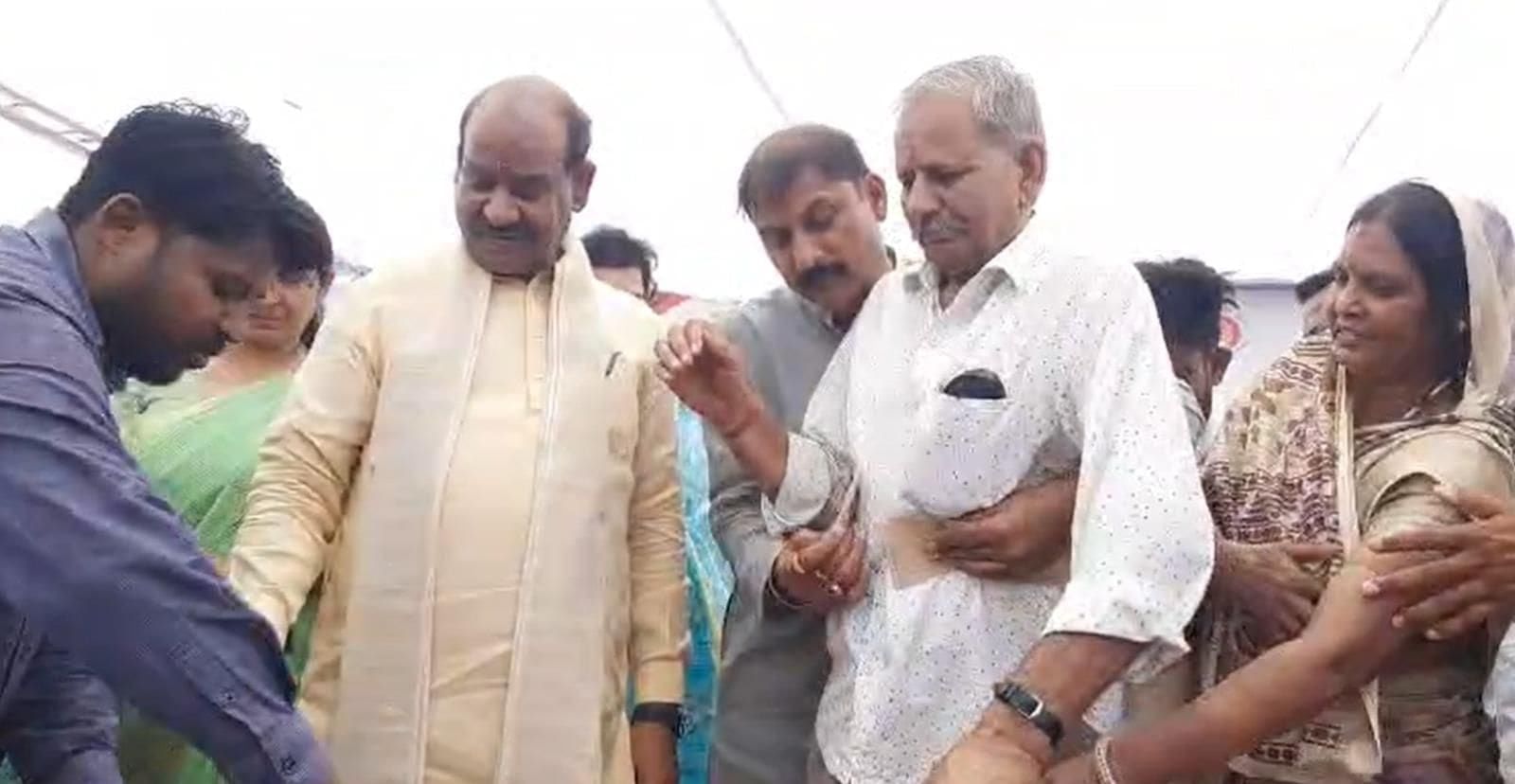
Why in News?
Lok Sabha Speaker Om Birla inaugurated the Pradhan Mantri Divyasha Kendra (PMDK) in Kota, Rajasthan, aimed at empowering individuals with disabilities by providing assistive devices.
Overview of the Pradhan Mantri Divyasha Kendra (PMDK)
- Initiative Management: The PMDK initiative is overseen by the Artificial Limbs Manufacturing Corporation of India (ALIMCO), a public sector unit under the Ministry of Social Justice and Empowerment.
- Objective: The primary goal is to offer high-quality and affordable assistive devices to senior citizens and persons with disabilities.
- Current Status: Presently, there are 45 PMDK centres operational across various states and Union Territories.
- Future Plans: The government aims to expand this network to 100 centres by June 2025.
Specific Focus of the PMDK in Kota
- Target Group: The new PMDK in Kota specifically focuses on visually impaired individuals.
- Services Offered:. comprehensive range of services is provided, including:
- Prosthetics and Orthotics: Devices to support limbs and improve mobility.
- Braille Appliances: Tools to assist visually impaired individuals in reading and writing.
- Mobility Aids: Equipment to enhance mobility for individuals with disabilities.
- Advanced Rehabilitation Technologies: Innovative technologies to aid in rehabilitation.
Skill Development and Empowerment Initiatives
- Vocational Training Programs: The PMDK aims to run vocational training programmes to develop skills among beneficiaries, supporting their employment and economic independence.
- Economic Independence: The programmes are designed to enhance the economic self-sufficiency of persons with disabilities.
Other Initiatives for Empowerment of Disabled Individuals
- PM-DAKSH (Divyang Skill Development and Rehabilitation Scheme)
- Deen Dayal Disabled Rehabilitation Scheme
- Assistance to Disabled Persons for Purchase/Fitting of Aids and Appliances
- National Fellowship for Students with Disabilities
- Unique ID for persons with disabilities (UDID) card
National Cooperative Spice Fair 2025
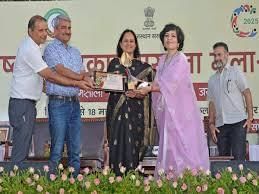
Why in News?
The National Cooperative Spice Fair 2025 was organized by the Rajasthan Cooperative Department and the Rajasthan State Cooperative Consumer Federation at Jawahar Kala Kendra, Jaipur.
Key Points About the Cooperative Spice Fair 2025:
- A variety of healthy and traditional spices, along with other cooperative products, were showcased at the fair.
- This year, products made from millet grains (Shree Anna) became a special centre of attraction.
- Various self-help groups, cooperative consumer associations, and local producers participated with their diverse product range.
- The fair provides consumers with the opportunity to acquire pure, high-quality, and healthy products directly.
- It promotes economic empowerment at the local level.
Millets About:
Millets are small-seeded grasses grown for their grains, primarily in dry areas on marginal lands. They are cultivated in various regions, including temperate, subtropical, and tropical areas.
- In India, common millets include Ragi (Finger millet), Jowar (Sorghum), Sama (Little millet), Bajra (Pearl millet), and Variga (Proso millet).
Global and Indian Production:
- India is the leading producer of millets globally, with Niger and China following.
International Year of Millets:
- The Food and Agriculture Organization (FAO) designated 2023 as the International Year of Millets.
- The Indian government supports millet production through the National Food Security Mission.
Krishak Uphar Scheme
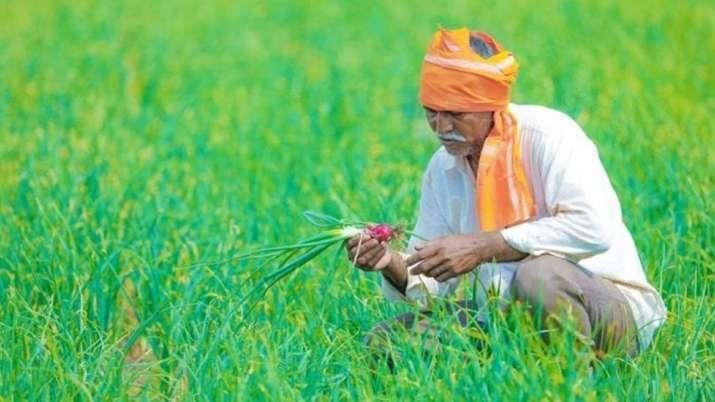
Why in News?
The Rajasthan government recently conducted a state-level online lottery as part of the Krishak Uphar Yojana, offering prizes worth several lakh to farmers.
Key Points About Krishak Uphar Yojana
- eNAM portal: The scheme promotes farmers to sell their agricultural products and receive payments through electronic means.
- It aims to maximize the value for farmers by minimizing the involvement of middlemen and facilitating direct sales to consumers.
- The lottery event was overseen by the Secretary of Agriculture and Horticulture at Pant Krishi Bhawan, Jaipur.
eNAM Portal
- The eNAM portal was initiated by the Central Government in April 2016.
- It serves as a national e-trading platform aimed at establishing a unified market for agricultural products across the country.
- Farmers can sell their produce online from their local markets, and traders can make payments from any location.
- This initiative is anticipated to increase the number of traders and foster competition.
- It will aid in effective price determination, ensuring that farmers receive a fair price for their produce.
- Currently, 150 commodities, such as food grains, oilseeds, fibres, vegetables, and fruits, are traded on the e-NAM portal.
- Over 1,005 Farmer Producer Organizations are also registered on the platform.
Maharana Pratap Jayanti
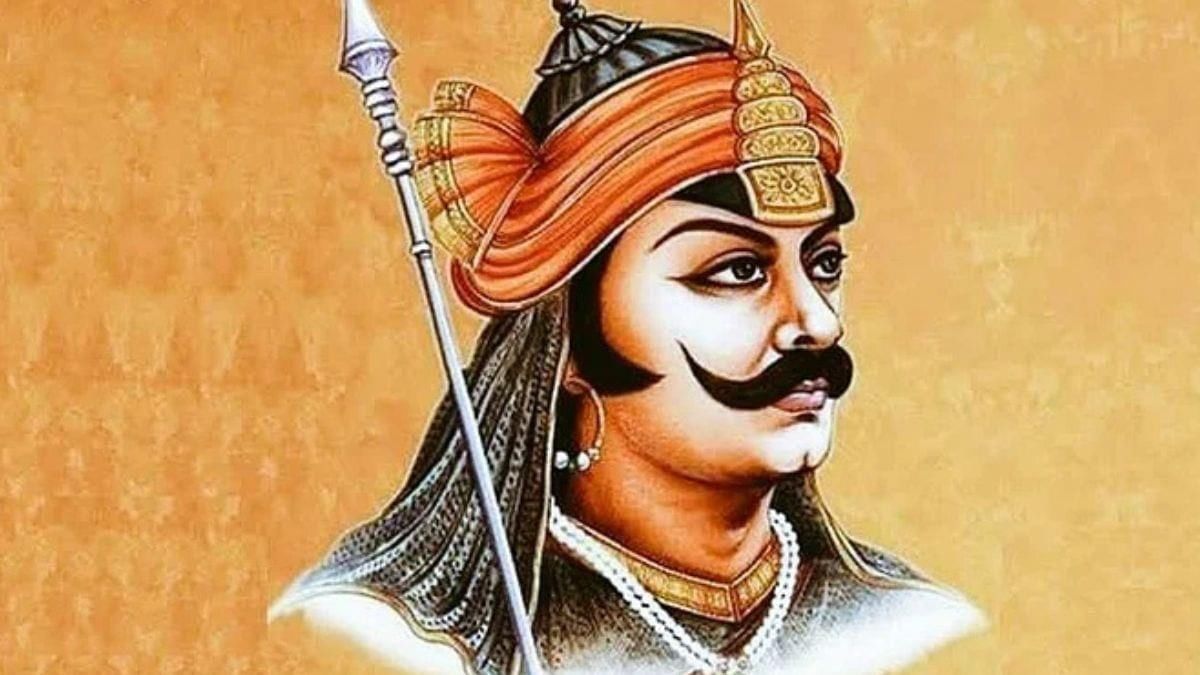
Why in News?
The birth anniversary of Maharana Pratap, celebrated on 9th May 2025, marks the 485th remembrance of one of India's brave and legendary warriors. This event was honoured across the nation.
Key Points About Maharana Pratap:
- Rana Pratap Singh, also referred to as Maharana Pratap, was born on 9 May 1540 in Kumbhalgarh, Rajasthan.
- He was the 13th king of Mewar and the eldest son of Udai Singh II.
- Maharana Udai Singh II governed the Mewar kingdom and established Chittor as its capital.
- He also founded the city of Udaipur in Rajasthan.
Battle of Haldighati:
- The Battle of Haldighati took place in 1576 between Rana Pratap Singh of Mewar and Raja Man Singh of Amer, who served as a general for the Mughal Emperor Akbar.
- Maharana Pratap fought valiantly but was ultimately defeated by the Mughal forces.
- It is believed that Maharana Pratap’s loyal horse, Chetak, sacrificed its life while helping him escape the battlefield.
Re-control:
- After 1579, the Mughal influence over Mewar varied, enabling Maharana Pratap to regain control over western Mewar, including Kumbhalgarh, Udaipur, and Gogunda.
- During this time, he constructed a new capital named Chavand, located near present-day Dungarpur.
Death:
- Maharana Pratap passed away on 19 January 1597.
- After his death, his son, Rana Amar Singh, ascended to the throne and accepted the supremacy of Akbar’s son, Emperor Jahangir, in 1614.
For further preparation, consider the ASUPSC Mains Test Series 2025.
Greenfield Airport in Kota
 Kota Airport Development
Kota Airport Development
Why in News?
The Union Civil Aviation Minister has recently approved the development of a new airport in Kota, Rajasthan.
Key Points About the Airport:
- The proposed airport will support the city of Kota, a key educational and industrial centre, as well as the broader Hadauti region.
- Districts such as Bundi, Baran, and Jhalawar will also directly benefit from this development.
- The project will ease travel for thousands of students, businesspeople, and local residents, boosting the economy.
- It is expected to create jobs, attract investments, and enhance tourism, aiding local growth.
“UDAN” Scheme
- This initiative is a significant step towards the Central Government's efforts to improve transport infrastructure in developing India.
Greenfield Project:
- A ‘greenfield project’ is one that starts from scratch without any previous work or structure in place.
- Such projects are built on unused land and do not require the demolition of existing buildings.
UDAN Scheme About:
- UDAN aims to make air travel more accessible and improve regional connectivity, ensuring even remote areas can be reached by air.
National Civil Aviation Policy (NCAP) 2016
- This scheme was established under the NCAP, focusing on linking Tier-2 and Tier-3 cities using a market-driven yet financially supported approach.
Airports Authority of India (AAI)
- The AAI is the main agency responsible for implementing this scheme.
Objectives and Significance:
- The project aims to enhance connectivity and support local economic development.
Power Purchase Agreement with RVUNL
- Why in News? NLC India Renewables Limited (NIRL), a subsidiary fully owned by NLC India Ltd. (NLCIL), has entered into a Power Purchase Agreement (PPA) with Rajasthan Rajya Vidyut Utpadan Nigam Limited (RVUNL) for an 810 MW solar project.
- Project Significance: The solar power plant will be located at Pugal Solar Park in the Bikaner district of Rajasthan. This barren land site is ideal for solar energy production due to its high solar radiation.
- Environmental Impact: The project is expected to generate nearly 2 billion units of green electricity annually, offsetting around 1.5 million metric tonnes of CO₂ emissions each year, contributing to India’s low-carbon transition.
- Infrastructure and Development: The project will be developed within RVUNL’s 2000 MW Pugal Solar Park. This marks a significant milestone for NLCIL as the first Central Public Sector Undertaking (CPSU) in India to establish 1 GW of solar projects.
Ultra Mega Renewable Energy Power Parks (UMREPP) Scheme
- The UMREPP scheme focuses on developing Ultra Mega Renewable Energy Power Parks under the existing Solar Park Scheme.
- Initiated by the Ministry of New & Renewable Energy (MNRE) in 2014, the Solar Park Scheme aims to set up multiple solar parks across various states in India.
- The Government of India intends to provide financial assistance for the establishment of these solar parks.
- The objective of UMREPP is to offer land upfront to project developers and facilitate the development of transmission infrastructure for Renewable Energy (RE) based Power Parks, which may include solar, wind, hybrid, and storage systems.
Cheetah Conservation Corridor
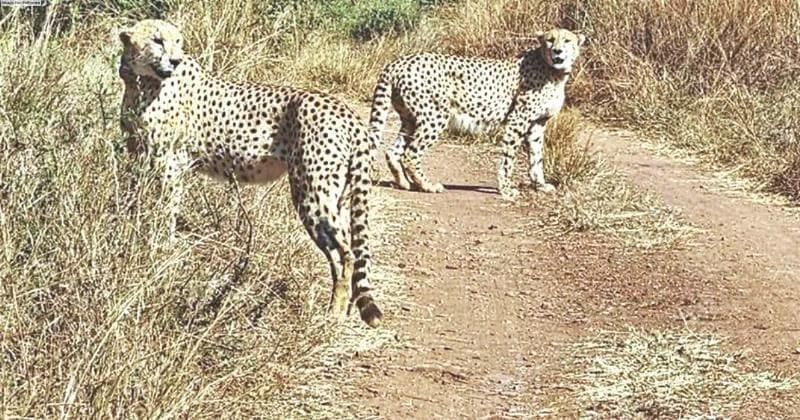
Why in News?
Cheetah, Rajasthan has become a part of India’s first interstate conservation corridor along with Madhya Pradesh.
Key Points About the Protected Area:
- The total area of the corridor is 17,000 sq km, with 10,500 sq km in Madhya Pradesh and 6,500 sq km in Rajasthan.
- Kuno National Park, located in the Sheopur district of Madhya Pradesh, is the main site included in this corridor.
- The Gandhi Sagar Sanctuary and Chambal River in Mandsaur district are chosen to develop a second habitat for cheetahs in Madhya Pradesh.
- Districts like Kota, Bundi, Baran, Jhalawar, Sawai Madhopur, Karauli, and Chittorgarh in Rajasthan are part of this project.
- Future plans include including forest areas of Jhansi and Lalitpur in Uttar Pradesh in this corridor.
Institutional support: National Tiger Conservation Authority (NTCA) and Wildlife Institute of India (WII) provide technical guidance for the project. Experts view this as a unique model of wildlife conservation in Asia that could serve as an example for other countries.
Features of the Corridor:
- This corridor will allow natural and uninterrupted migration of cheetahs between protected areas.
- It establishes strategic wildlife connectivity between the two states, being the first initiative of its kind in India.
- The project's goal is to restore and conserve grassland-based ecosystems.
- The corridor aims to connect safe and natural habitats for cheetahs.
National Tiger Conservation Authority (NTCA):
- Introduction: It is a statutory body under the Ministry of Environment, Forest, and Climate Change, established in 2005 following the Tiger Task Force's recommendations.
- Wildlife (Protection) Act, 1972: NTCA was formed under this Act, amended in 2006 to strengthen tiger conservation.
- Objective: Project Tiger aims to provide statutory powers to ensure legal compliance with its directions.
- It promotes Centre-State accountability in managing tiger reserves through MoUs with States within a federal framework.
- NTCA ensures oversight by Parliament and addresses the livelihood interests of local people near Tiger Reserves.
Elites Smart Government Excellence Award
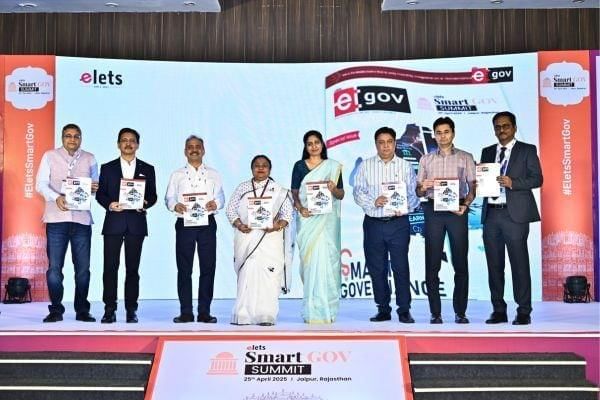
Why in News?
The Rajasthan Medical Services Corporation Limited (RMSCL) has been honored with the Elites Smart Government Excellence Award for the year 2025.
Key Details About the Award
- The award was presented at an event organized by Elites Technomedia, in collaboration with the Department of Information Technology and Communication and the Department of Personnel of Rajasthan, along with the Editor in Chief of e-Government Magazine.
- RMSCL was recognized for its technological advancements in the healthcare sector, particularly in areas such as e-medicine and e-device software.
E-medicine Software
- The e-medicine software enables comprehensive monitoring of the supply, distribution, and availability of medicines in hospitals across Rajasthan.
- It offers real-time information on both the availability and shortages of medicines.
E-Tools Software
- The e-tools software connects all medical institutions in the state through an online platform.
- It provides timely notifications regarding equipment shortages or defects, ensuring prompt supply and repair solutions.
The Rajasthan Medical Services Corporation Limited (RMSCL) is a public sector organization established by the state government in 2011 with the aim of enhancing medical and health services in Rajasthan.
Malaria Elimination in Rajasthan
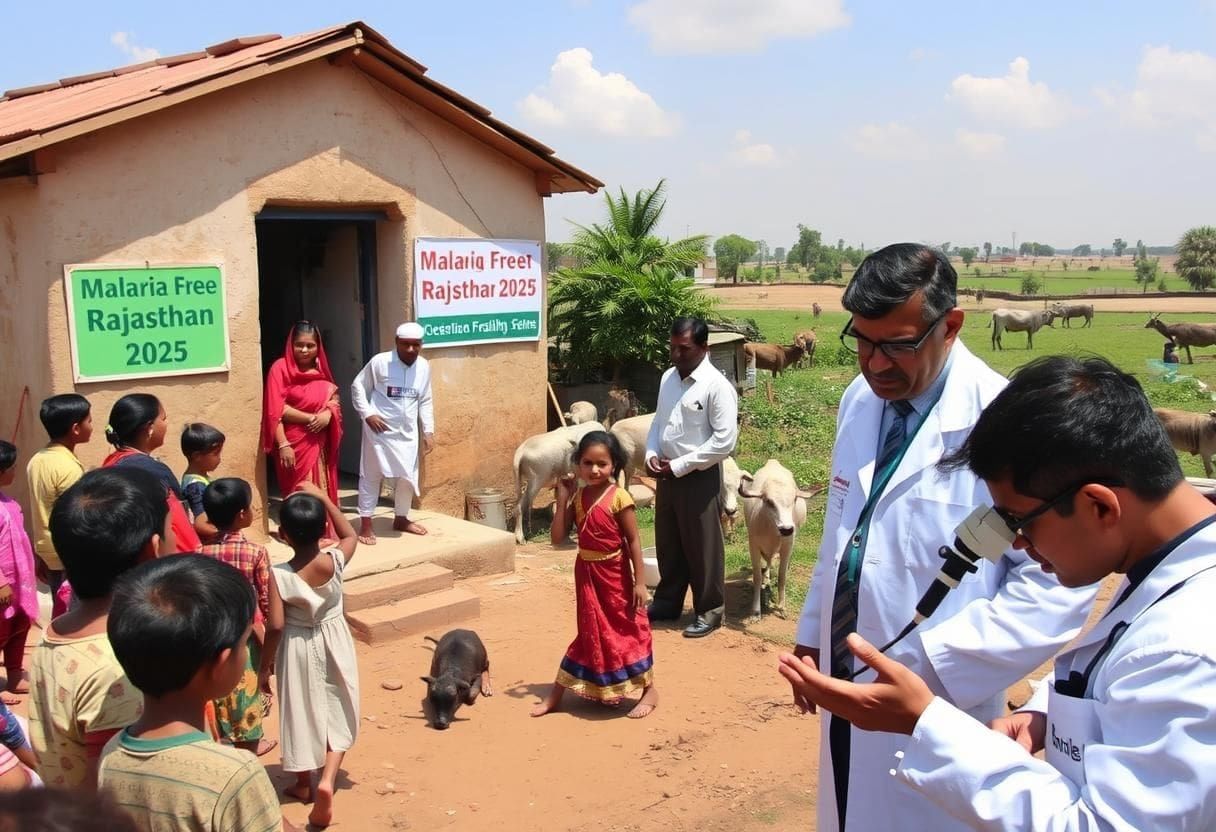 Malaria Elimination
Malaria Elimination
Why in News?
World Malaria Day 2025: Rajasthan has been recognized as a Category-1 state for malaria elimination at the national level.
Key Points
- Drastic Drop in Malaria Cases: Rajasthan has significantly reduced malaria cases, along with dengue and chikungunya, due to effective strategies and innovative measures.
- Reported Cases: In 2024, there were 2,213 malaria cases, but only 59 cases have been recorded in 2025 so far.
- Success of Public Awareness Campaign: The public was educated through various methods, including larva demonstrations, audio-visual materials, pamphlets, and posters, which enhanced disease prevention.
- Control Activities: Anti-larval spraying, focal spraying, and fogging were conducted across the state starting from 1 April 2025, benefiting both urban and rural areas.
- Special Attention in High-Risk Districts: Indoor Residual Spray (IRS) was implemented in two phases across 9 high-risk districts: Alwar, Balotra, Barmer, Bikaner, Jaisalmer, Pratapgarh, Salumber, Sriganganagar, and Udaipur.
- About Malaria: Malaria is a severe illness caused by the Plasmodium parasite, transmitted through the bites of infected female Anopheles mosquitoes. There are five species of Plasmodium that infect humans, with P. falciparum and P. vivax being the most dangerous. It is primarily found in tropical and subtropical areas of Africa, South America, and Asia.
- Transmission: When a mosquito bites an infected person, it becomes infected itself. The parasites then enter the body of the new host, reaching the liver, where they multiply and infect the red blood cells.
- Symptoms: Common symptoms of malaria include fever, chills, headaches, muscle aches, and fatigue. Importantly, malaria is treatable and preventable.
- World Malaria Day: Celebrated annually on 25 April, it was established by the World Health Organization (WHO) in 2007 to raise awareness and promote action against malaria. The theme for World Malaria Day 2025 is “Malaria Ends with Us: Reinvest, Reimagine, Reignite.”
Under-20 National Wrestling Championship
 Under-20 Wrestling Championship
Under-20 Wrestling Championship
Why in News?
The Under-20 National Wrestling Championship was held in the Kota district of Rajasthan from 20 to 22 April 2025. The event was organized by the Rajasthan State Wrestling Association.Key Points About the Competition
- This was the first time the Wrestling Federation of India (WFI) hosted the Under-20 National Wrestling Championship in Rajasthan.
- The event took place at the Raghurai Endo Sports Complex in Kota.
- Over 800 wrestlers from 26 states and union territories participated in the championship.
- Competitions were held in various categories, including men’s Greco-Roman, men’s freestyle, and women’s freestyle wrestling.
- There were a total of 10 weight categories in each competition category.
Winners
- Haryana secured the first place with a total of 16 gold medals.
- Delhi finished in second place with 6 gold medals.
- Uttar Pradesh came in third with 3 gold medals.
Wrestling Federation of India (WFI)
- The WFI is the governing body for wrestling in India.
- Its headquarters are located in New Delhi.
- The WFI is recognized by the Government of India and the Indian Olympic Association.
- The federation organizes various national and international wrestling competitions, such as the Pro Wrestling League, National Wrestling Championships, and Asian Championships.
- Additionally, the WFI provides support and training for Indian wrestlers participating in the Olympic Games.
Mission Parinda Campaign
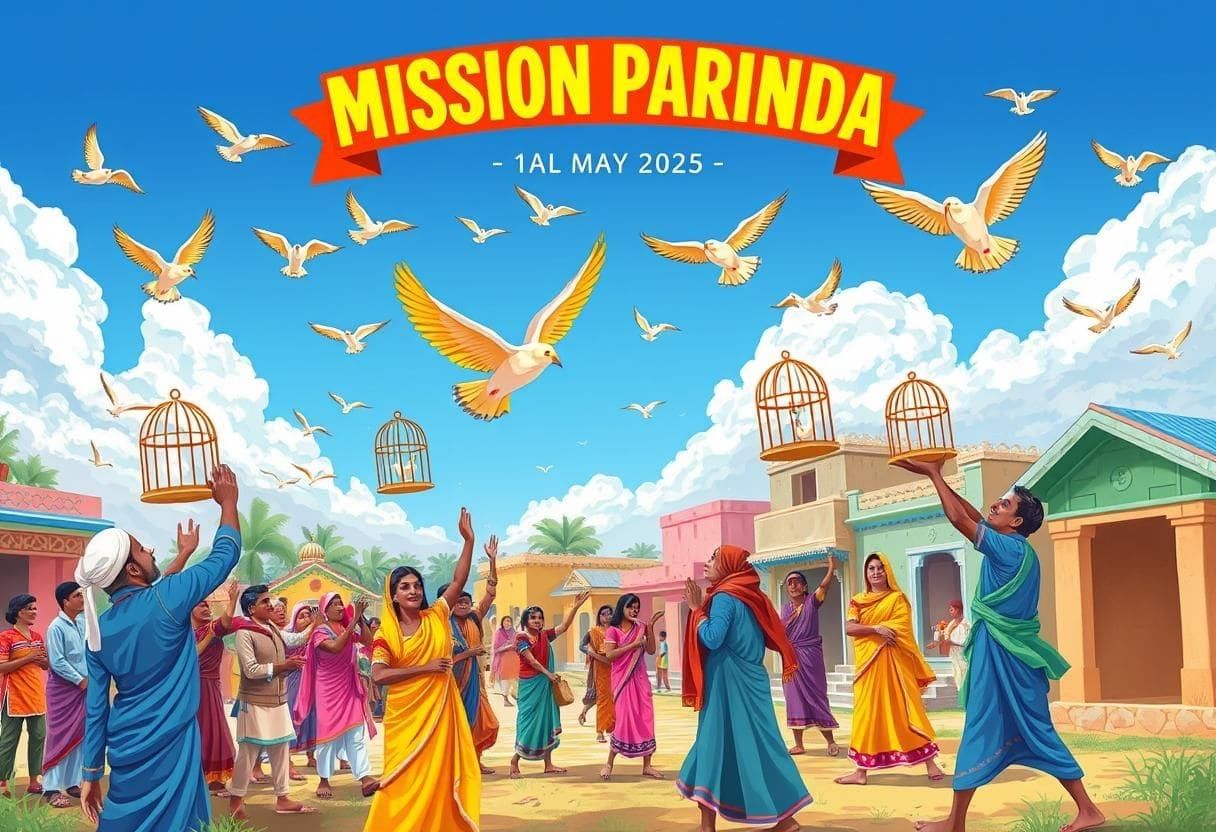 Bird Conservation
Bird Conservation
Why in News?
The ‘Mission Parinda’ campaign was launched by the Baran district administration of Rajasthan on the occasion of Panchayati Raj Day.
Key Points About the Campaign:
- The aim of this campaign is to provide water to birds during summer and to promote awareness about environmental conservation and biodiversity.
- In the first phase, water containers will be set up in all government offices, which will be regularly filled with cold water.
- In the second phase, nests will be installed to offer safety and comfort to birds, particularly in the summer.
- These nests will be made from grass and coconut fibres.
- The district administration has requested the public to participate in this important campaign by placing water containers at home and in workplaces.
National Panchayati Raj Day
- This day, celebrated on April 24, commemorates the enactment of the 73rd Constitutional Amendment Act, 1992, which granted statutory status to Panchayati Raj Institutions (PRIs).
- It was first celebrated in 2010.
FAQs on RPSC Monthly Current Affairs: May 2025 - Monthly Current Affairs RPSC - RPSC RAS (Rajasthan)
| 1. What are the key features of Rajasthan's textile industry? |  |
| 2. How has the government supported the textile industry in Rajasthan? |  |
| 3. What is the significance of Jaisalmer Fort in relation to Rajasthan's textile heritage? |  |
| 4. What types of textiles are unique to Rajasthan? |  |
| 5. How does Rajasthan's textile industry contribute to employment and the economy? |  |




